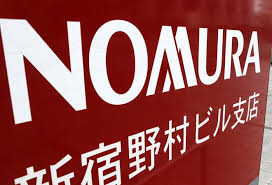 The finance ministry is streamlining safe harbour rules and advance agreements, two mechanisms to determine the price of services rendered by a multinational to its subsidiary in India.
The finance ministry is streamlining safe harbour rules and advance agreements, two mechanisms to determine the price of services rendered by a multinational to its subsidiary in India.
Safe harbour rules – directives on margins the tax authorities should accept for the transfer price declared by an assessee – have drawn a tepid response since they were introduced a couple of years ago. There is also a huge backlog in advance pricing agreements (APAs), an ahead-of-time understanding between a taxpayer and the tax authority on an appropriate transfer pricing methodology.
| ALIGNING INDIAN TAXATION WITH BEST PRACTICES |
Safe harbour rules
Advance Pricing Agreement
The move would simplify the tax regime, reduce litigation and help improve the business environment, a finance ministry official said. The steps will involve lowering the margins in safe harbour rules and definitions will be reworked to remove ambiguities. India announced the safe harbour rules in 2013, but the high margins of up to 25 per cent on total operational profits have made it unattractive for companies to use them. |
“We are addressing issues related to transfer pricing to align it with best practices. We are revising the safe harbour rules that will include revisiting the definition and revising the margins, considered high by companies,” said a tax official.
Information technology (IT) and information technology-enabled services (ITeS) companies with transactions of up to Rs 500 crore have a safe harbour operating margin of 20 per cent and those with transactions above Rs 500 crore have a margin of 22 per cent. Knowledge process outsourcing companies have a safe harbour operating margin of 25 per cent.
Experts argue there is ambiguity in the definition of IT, ITeS and knowledge process outsourcing companies with a lot of overlap. Moreover, the margins decided in tribunals or in advance pricing agreements turn out much lower, ranging between 15 and 18 per cent.
“The definitions under the safe harbour rules are fuzzy and sometimes overlap, creating confusion over what rate should apply and which company will fall under which sector. We are expecting clarity on the definition,” said Rahul Garg, leader, direct tax, PwC.
Manisha Gupta, partner, Deloitte Haskins & Sells, said the safe harbour margins were high. “The government agrees to far lower rates at tribunals and in advance pricing agreements,” she said.
The lowering of safe harbour rates will ease the advance pricing agreement backlog. The government introduced the advance pricing scheme in 2012 and there are over 500 applications pending.
“We are considering sector-wise handling of cases by officers to expedite decisions,” the tax official said. “We have already made a request for an increase in manpower to clear the backlog. We expect a decision soon,” he added.
India has the highest incidence of transfer pricing litigation worldwide. The number of cases scrutinised has quadrupled from 1,061 in 2005-06 to 4,290 in 2014-15.
Among measures recently introduced, the government said an officer would be assigned not more than 50 important and complex transfer pricing cases. Officers typically audit more than 70 cases at a time.
Besides, the tax department has incorporated range and multi-year data in transfer pricing calculations to bring Indian laws in line with international practices. Earlier, single-year data and the arithmetic mean were used to arrive at transfer pricing.
Earlier this year, the finance ministry allowed rollback advance pricing agreements so that multinational companies could settle taxes for previous years as well.
“The burden on tribunals, high courts, Supreme Court and even on the APA team can be substantially reduced if the Indian government revamps the safe harbour rules (that is, devising calibrated and more reasonable margins for the sector consistent with the margins finally arrived at post-tribunal orders/MAP/APA and providing clarifications on what constitutes software development activities, KPO, contract R&D,” said a Deloitte & Taxsutra report on transfer pricing.
Approximately over 40 per cent of APA applications are from the IT/ITeS sector. Up to September 2015, more than 575 APA applications have been filed with the APA authorities. Fourteen of these APAs have been concluded, of which 12 are unilateral and two bilateral (with Japan and the UK).
Source:Business Standard
